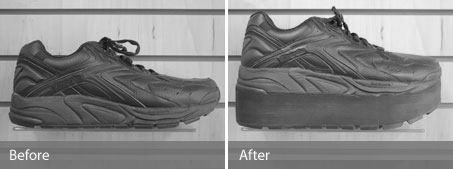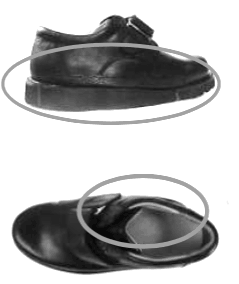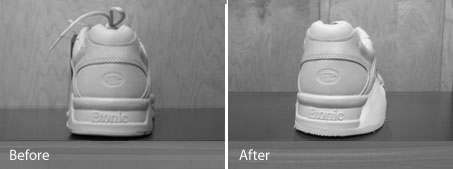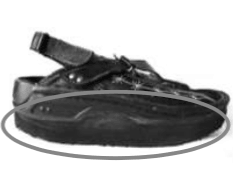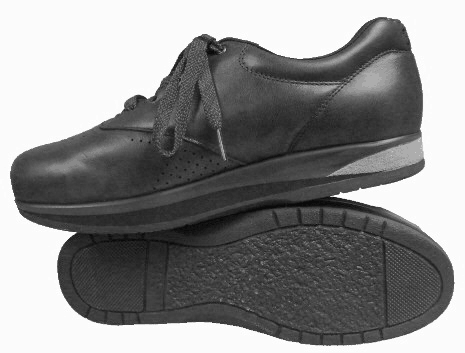The ability to adjust or modify footwear is one of the unique skills of our Pedorthists.
Your footwear may provide you with many benefits. However, sometimes shoes may need to be modified by a trained specialist in order to better support and accommodate your individual needs.
These modifications can be made to everyday footwear as well as to some athletic footwear. Some modifications are not appropriate for all types of footwear so you should discuss your options with one of our Pedorthists.
Examples of conditions that might benefit from a shoe modification might include:
- Bunions
- Different leg lengths
- Arthritis
- Fractures
- Abnormal foot alignments
These types of footwear modifications can range from simple to complex.

Excavations:
This modification is used to reduce the pressure on sensitive areas. The midsole of the shoe is ground-out or “excavated” leaving a pocket that can either be left empty, or filled with a softer material.
Who would benefit? People with:
- “dropped” or prominent bones
- lesions, or sensitive areas (eg. arthritic joints, wounds, fibromas)
Flares and buttresses:
These modifications are used to widen the base of the shoe on the inside (medial) or outside (lateral) aspect and strengthen the shoe in that area. They are used to stop the foot from collapsing in an area and distorting the shoe.
Who would benefit? People with:
- severely pronated feet
- chronic ankle sprains
Rocker soles:
This modification is used to relieve pain in the ball of the foot, aggressively offload certain areas of the foot or to improve gait by aiding the heel contact or push off phase of gait
Who would benefit? People with:
- arthritis of the big toe
- metatarsalgia (forefoot pain)
- ankle arthritis
- achilles tendonitis
SACH Heel (Solid Ankle Cushion Heel)
This modification is characterized by the addition of a more cushioned material replacing a portion of the heel area of the shoe. SACH heels reduce shock at heel strike and compensate for diminished ankle motion.
Who would benefit? People with:
- an injury to their heel or ankle
- arthritis of the heel or ankle
- a surgical ankle fusion


